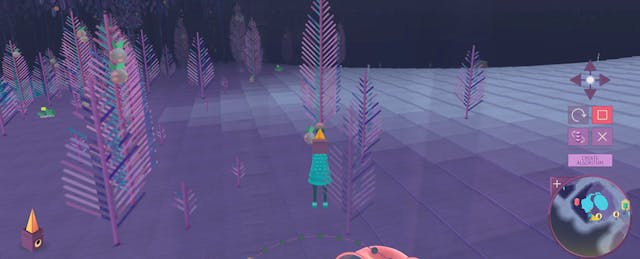Imagine learning math and science from the perspective of a middle or high school student. The student’s mental image of the subject is more than likely that of a textbook—dense, daunting, and dry—accompanied by a sigh exclaiming, “Please, anything but this!”
Only the rare student, who already is passionate about the topic, would consider navigating a textbook alone or for pleasure. But the simple truth is that these books of isolated facts and abstract ideas have never been the way people have truly learned to view the world scientifically. The pursuit of questions that matter, in ways that stretch our imaginations and support a kind of playful engagement with ideas, has always been one of the defining characteristics of our species.
Over the last few decades, research in educational psychology has shown that play, in particular, is how children develop the cognitive, social and communication skills needed to succeed in life. Play comes in many forms, and allows children to test their abilities, explore, invent, and most importantly—fail and learn from their mistakes. Learning through play is where children (and adults) develop higher-level thinking skills that enable them to be engaged and creative learners throughout life.
Although playfulness is foundational to learning, most formal education settings do not engage students in playful experiences, especially across the sciences. That’s where the New York Hall of Science (NYSCI), an interactive science learning center for students and families, comes in. We have the privilege of enabling children to learn about their world through playful approaches to science, technology, engineering and mathematics (STEM).
At NYSCI we have pioneered Design-Make-Play, a novel approach to learning and engagement that draws upon deeper learning research and supports the creation of learning experiences that develop critical thinking, knowledge integration, innovation and creativity skills. Our aspiration is to create resources that have a measurable and scalable impact on how people learn. The museum anchors and inspires all the work that we do, fostering public engagement in STEM, supporting our youth programming, education offerings and research. We have developed innovative products to extend learning far beyond our walls, and our extensive network of partnerships deepens and broadens our impact, locally and around the world.
One of our newest resources, an open-world game anyone can play called The Pack, brings Design-Make-Play to the worlds of computational thinking and environmental problem-solving. The Pack is released today, on Earth Day, April 22.
The game is inspired by NYSCI’s groundbreaking Connected Worlds exhibition, which is an immersive animated world that encourages visitors to playfully explore interconnected habitats that comprise the larger ecosystem. Wired Magazine characterized Connected Worlds as “an interactive simulation big enough to walk around inside—virtual reality that's not piped into a headset but projected onto a real physical space.”
The Pack is based around two timely STEM subjects—environmental awareness and computational thinking. Set in a future world where healthy ecosystems have faltered and resources are scarce, it’s up to the player to restore the environment. You embark on an open-ended quest to find food and water by using your “Pack”—creatures that have unique functions like digging, moving, holding, grabbing and repeating. When your Pack has more than one type of creature, you can combine them into algorithms to perform tasks and overcome challenges.
As you advance, you must create more complex algorithms that allow you to do new things. Playful learning is at the heart of this open-world adventure that requires self-motivation to succeed at the game. Internalizing algorithmic thinking skills and developing a stepwise, problem-solving mindset is a direct result of this type of learning, which students can apply across disciplines for years to come.
More than just problem-solving, playful learning encourages social and behavioral skill development. Our initial field testing shows that players make use of varied strategies to solve the challenges they confront in the game. Some ensure the creatures are maximally efficient at their jobs, some act as creature caretakers and some try to exploit the underlying coding and computational thinking in the game. All of these are valid approaches to playing The Pack, which encourages student agency and self-directed learning.
Science learning should inspire passion and curiosity in young people. The Pack is free and available for download online for Mac OSX and Windows. As a game that young people find irresistible, we hope it can be a classroom tool that educators can use to inspire computational thinking in their students and spark a discussion around environmental concerns. Playful, STEM-based learning is central to nurturing the next generation of STEM innovators.


